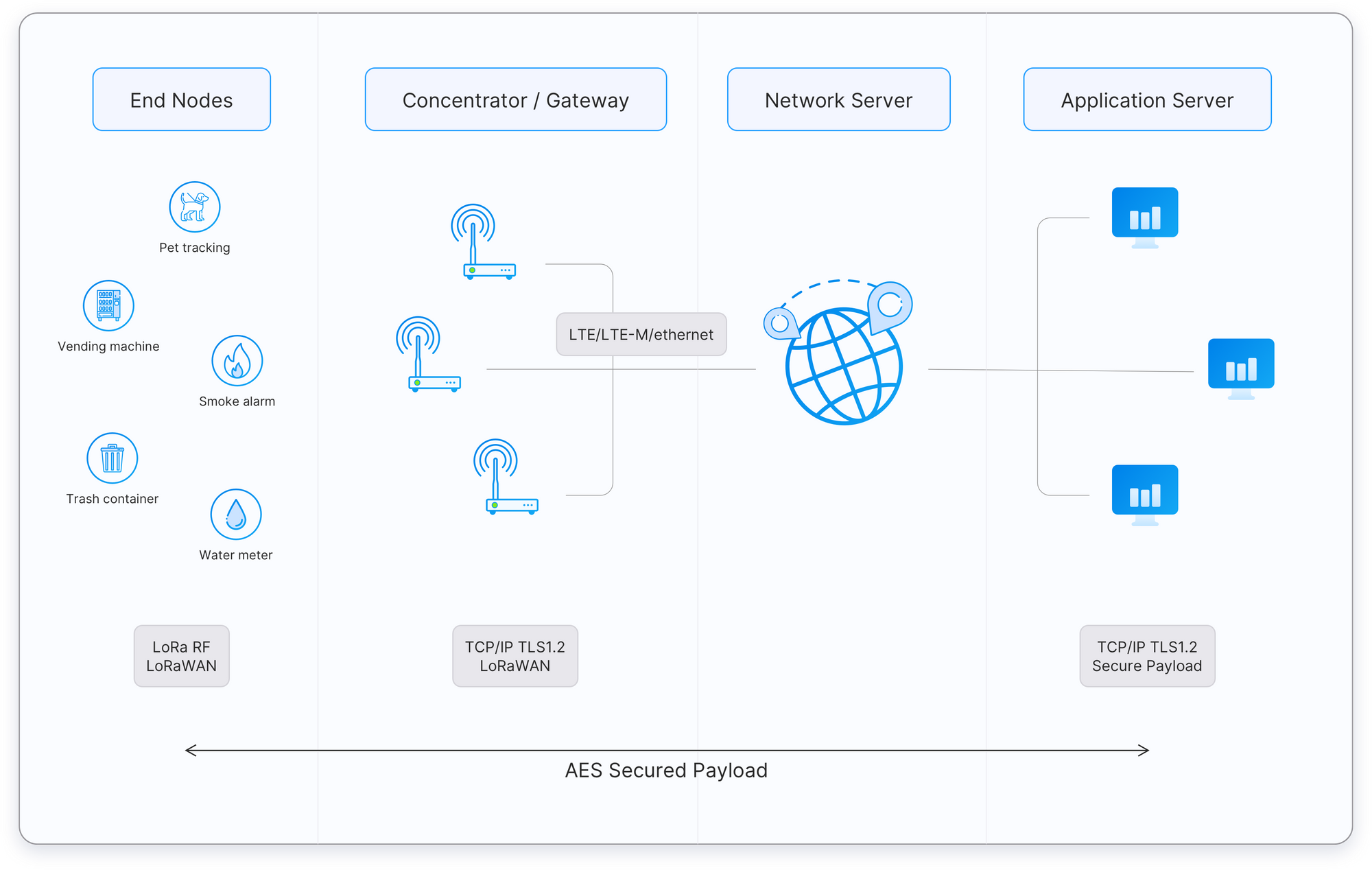What is a LoRaWAN Gateway?
One of the critical hardware components in the LoRaWAN IoT Architecture is the LoRaWAN gateway. It collects the data from LoRaWAN devices and forwards it to the LoRaWAN network server. Without the LoRaWAN gateway, a LoRaWAN IoT network is not possible. It is the backbone of the star topology network of the LoRaWAN IoT architecture.

LoRaWAN gateways are designed to work on a defined frequency of operation. Gateways to be deployed in a specific certain country must follow the LoRa Alliance’s LoRaWAN Regional Parameters. There is no universal frequency for LoRaWAN because each country has different laws regarding to the usage of an unlicensed sub-gigahertz frequency band. An example for LoRaWAN Frequency Band is EU868 (863-870Mhz) for Europe and US915 (902-928Mhz) for the United States. Every country has specific channel found in the LoRa Alliance’s LoRaWAN Regional Parameters document. LoRaWAN gateways and devices must operate in the same frequency plan to work. If the LoRaWAN device uses a different frequency plan with the LoRaWAN gateway, that device will be invisible to the LoRaWAN gateway. In that case, the LoRaWAN gateway will not be able to forward the device’s data to the LoRaWAN network server.
A LoRaWAN gateway is made of two major component: the host and the concentrator. The first component, called host, is the brain of the LoRaWAN gateway. It is a tiny computer responsible for forwarding the LoRaWAN data packets to the LoRaWAN network server. The critical software component running in the host is called the packet forwarder. It determines which LoRaWAN network server will receive the LoRaWAN packets collected by the LoRaWAN gateway. The second component inside the LoRaWAN gateway is the concentrator. It is the RF part of the LoRaWAN gateway. The concentrator has RF chips in its front-end section which allows simultaneous LoRaWAN data reception. The concentrator has a digital baseband chip that performs digital signal processing on the RF signal to make it meaningful for the host. The host and the concentrator of the LoRaWAN gateway communicate via serial communication at a board level.
LoRaWAN gateways can be deployed online or offline depending on the requirements and constraints of the IoT application. For online gateways, it needs to have a backhaul network to connect to the internet. Communication backhauls options for LoRaWAN are WiFi, ethernet, cellular, and satellite. LoRaWAN gateways that are connected online mainly uses LoRaWAN network server deployed in the cloud. Example of some online LoRaWAN network servers are The Things Stack, Helium Network, and AWS IoT Core for LoRaWAN. It can also be offline and can utilize the built-in network server in the LoRaWAN gateway itself or connect to a network server deployed locally on a PC or server. One of the popular LoRaWAN network servers used for local LoRaWAN networks is the Chirpstack. Whether the LoRaWAN gateway is online or offline, it must be registered to the LoRaWAN network server then the packet forwarder must be set appropriately.
The LoRaWAN gateway seems complicated, but it is a mere middleman between its device and the network server. Its first job is to receive the LoRaWAN packets by having the proper frequency plan that matches the LoRaWAN devices in the region it is deployed. Then the second job is to forward the LoRaWAN data correctly to the LoRaWAN network server where the LoRaWAN gateway is registered via the packet forwarder. With these things adequately configured, you can have your working LoRaWAN gateway in no time.






